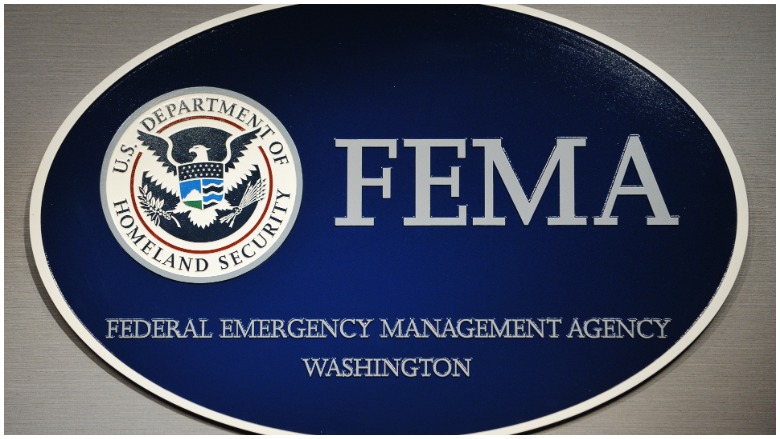
Getty
President Trump originally announced that the Federal Emergency Management Agency (FEMA) would be in charge of distributing funds for his new program, the Lost Wages Assistance (LWA) program, on August 8.
However, only a handful of the dozens of states approved for LWA — which was designed to replace the expired $600 unemployment benefits supplement that had expired in July 27 with an addition $300-400 in unemployment benefits — have started distributing benefits.
There are 37 states across the country that have been approved for LWA (as of August 29): Wyoming, Oregon, West Virginia, Ohio, Virginia, Maine, Arkansas, Connecticut, Pennsylvania, Washington, New Hampshire, New York, Alaska, Georgia, Vermont, Mississippi, Tennessee, Rhode Island, Massachusetts, Alabama, California, Indiana, North Carolina, Texas, Kentucky, Michigan, Maryland, Idaho, Oklahoma, Montana, Arizona, Iowa, Louisiana and New Mexico, Colorado, Missouri and Utah.
Yahoo Finance reported that only five of them – Arizona, Louisiana, Missouri, Tennesse, and Texas – have actually distributed any unemployment benefits. Other states are holding eligible recipients limbo as they try to figure out how to set up payment distribution systems. At least six states (North Dakota, Minnesota, Wisconsin, Nebraska, Kansas, South Carolina and Florida) have not even applied, according to Yahoo Finance.
ABC-11 reported that LWA payments from North Carolina‘s Division of Employment Security (DES) could begin in early September, but that’s just a projection. As ABC-11 reported, “the exact timeline of when North Carolinians can expect to receive the benefits is unclear,” which is also the case with most states.
So what’s taking so long for these unemployment supplements to be distributed and how long could you be waiting?
What Is the Cause of the Delay in Distributing the Funds?
Michele Evermore, a senior policy analyst from the National Employment Law Project, told Yahoo Finance that the delay is partially being caused by how Trump created the program.
In Trump’s August 8 memo about LWA, he announced that FEMA, which is an agency typically used to assist states in recovering from natural disasters, would be administering the payments. Trump was able to select FEMA as the agency of distribution by employing the Robert T. Stafford Disaster Relief and Emergency Assistance Act, which allows FEMA to be enlisted to assist states and localities during “Federal disaster response activities,” according to a definition from the FEMA webpage. However, this, Evermore said, slowed things down.
“If it was an act of Congress, they could just use their regular system to pay these benefits,” she said. “(Now) they have to set up a benefit that’s parallel to unemployment insurance.”
Another reason there may be a delay is that states which have chosen to pay out $400 often must seek approval from their State Legislature to access the funds. As part of states’ application processes, they must indicate if they are choosing the $400 amount to make available to those eligible for the program. States that choose the $400 option will use $100 in state funds along with the $300 provided through FEMA.
Vermont, for example, has asked its State Legislature for $20 million to pay out the additional $100 that states contribute, according to Yahoo Finance. In states with divided government or funds already depleted from COVID-19, that can be a difficult proposition which could extend the process.
Here’s How Soon You Could See Your Benefits
After the approval process, it can take “several weeks” for the states to have the infrastructure in place to distribute the funds, Evermore said, according to Yahoo Finance. In a press release, Pennsylvania’s Department of Labor & Industry Secretary Jerry Oleksiak said, “L&I is working as quickly as possible to evaluate what it will take to implement this program and begin paying the $300 weekly supplement in Pennsylvania while awaiting final program guidance from the federal government.”
Many states have estimated that their distribution dates are about a month out from their approval dates, such as Maryland (approved August 20 and expecting to distribute payments in “late September”) and Colorado (approved August 19 and expecting to pay benefits in “mid-to-late September”).
Based on those estimates, it could take about a month from your state’s approval date before you begin seeing funds from LWA. (FEMA has a list of the approved states and when they were approved here).
Evermore said that states are doing their best to implement the program quickly if only to avoid political retaliation from Trump. “States are really trying to expedite this money,” Evermore told Yahoo Finance. “Even the states that ordinarily are a little bit poky about getting benefits feel that this is the priority for the administration so ‘we better not embarrass the president right before an election.’”
The good news, however, is that payments will be retroactive from the week ending August 1, which is the same week that unemployment ended, according to FEMA’s website.
READ NEXT: The $300 Per Week Unemployment Benefit Could End Much Sooner Than December 27